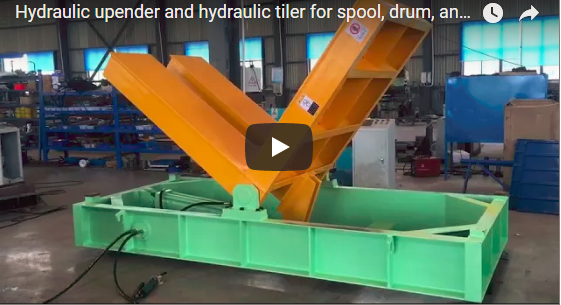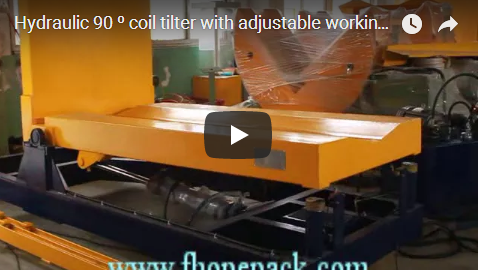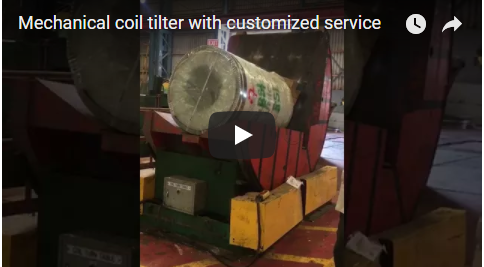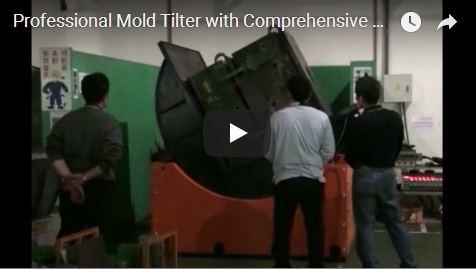In the demanding world of metal fabrication and steel processing, handling heavy steel coils presents significant challenges. These massive, unwieldy loads require careful maneuvering to ensure operator safety, prevent costly material damage, and maintain operational efficiency. Traditionally, rotating a coil 90 degrees—from eye-to-the-sky (vertical bore) to eye-to-the-wall (horizontal bore) or vice versa—and verifying its weight involved multiple steps, often using overhead cranes, forklifts, and separate floor scales. Today, however, modern material handling technology offers a streamlined solution: the steel coil upender with integrated weighing capabilities. This essential piece of equipment not only performs the critical 90-degree rotation safely and efficiently but also provides accurate weight data in a single, combined operation, revolutionizing coil handling in fabrication shops, service centers, and warehouses.
Understanding the Steel Coil Upender: More Than Just a Tilt
At its core, a steel coil upender, also known as a coil tilter or coil positioner, is designed to securely grip and rotate heavy cylindrical loads, most commonly steel or aluminum coils, through 90 degrees. This reorientation is crucial for various stages of processing, storage, and transportation.
The Core Function: Safe and Efficient 90-Degree Rotation
The primary function is to transition a coil between horizontal and vertical orientations. This is vital for:
- Loading/Unloading: Receiving coils stored eye-to-the-sky and positioning them eye-to-the-wall for uncoilers or processing lines.
- Storage: Optimizing warehouse space by storing coils vertically.
- Processing: Feeding coils into stamping presses, roll formers, or slitting lines that require a specific orientation.
- Shipping: Preparing coils for transport, ensuring stability and compliance with carrier requirements.
Upenders typically feature a robust steel structure with two platforms or cradles meeting at a right angle. One platform supports the coil in its initial position, and as the machine actuates, the coil is smoothly rotated onto the second platform, completing the 90-degree turn. Features like V-shaped cradles, sometimes lined with non-marking materials like polyurethane, help center and protect the coil during rotation.
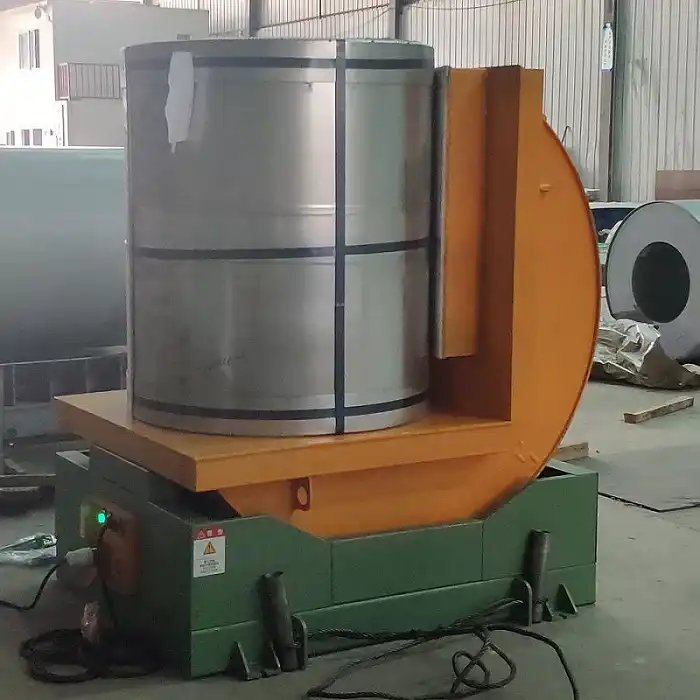
Mechanical vs. Hydraulic Upenders: Choosing the Right Power
Steel coil upenders are primarily powered by either mechanical or hydraulic systems:
- Mechanical Upenders: These units utilize electric motors, gear reducers, and often chain or screw mechanisms to drive the rotation. They "rock" the cradle structure through the 90-degree arc. Mechanical upenders can be a cost-effective solution, particularly for standard coil sizes and consistent operations. They often feature electromechanical brakes for holding the load securely.
- Hydraulic Upenders: Employing hydraulic cylinders powered by an electro-hydraulic power unit, these upenders offer smooth, highly controllable motion. The hydraulic system provides significant lifting force and precise speed control, making it ideal for very heavy coils or loads with shifting centers of gravity. Hydraulic designs are often preferred for applications requiring variable speeds or handling particularly long or large-diameter coils where stability during the lift-and-tip motion is paramount.
The choice between mechanical and hydraulic often depends on capacity requirements, duty cycle, control precision needs, budget, and the specific characteristics of the coils being handled.
The Critical Advantage: Integrating Weighing Capabilities
While the 90-degree rotation itself boosts safety and efficiency, integrating a weighing system directly into the upender elevates its value proposition significantly. Instead of moving a coil from storage to a floor scale, then to the upender, and finally to the processing line, the upend-and-weigh operation combines these steps.
Why Integrated Weighing Matters
- Reduced Handling: Fewer steps mean less time spent moving the coil, directly translating to increased throughput and reduced labor costs. Sources suggest handling time can be cut by up to 50%.
- Minimized Damage Risk: Each time a heavy coil is lifted, moved, and set down, there's a risk of damage – dents, edge damage, or telescoping. Combining weighing and tilting minimizes these touchpoints.
- Improved Inventory Accuracy: Accurate weight data captured during handling ensures precise inventory records, crucial for production planning, cost accounting, and shipping documentation.
- Space Savings: Eliminating the need for dedicated floor scales frees up valuable plant floor real estate.
- Streamlined Processes: Weight data can be instantly captured and transmitted electronically to inventory management systems (ERP/WMS) or shipping computers, eliminating manual data entry errors.
How It Works: Load Cells and System Integration
Integrated weighing systems typically incorporate high-precision load cells into the structure of the upender, often within the base or the coil-supporting platform. Multiple load cells are strategically placed to accurately measure the load regardless of its position on the platform.
The signals from these load cells are summed and processed by a digital weight indicator. Advanced systems ensure the displayed weight is stabilized and accurate, unaffected by the motion of the upender during rotation. The weight data can be displayed locally on a digital readout, transmitted wirelessly to remote scoreboards or printers, or integrated directly into plant network systems. The accuracy of these integrated systems is typically high, often within ±0.2% to 0.5% of the total load capacity.

Accuracy and Calibration Considerations
Maintaining the accuracy of the integrated scale is crucial. Regular calibration checks, following manufacturer recommendations and industry standards, are necessary. Factors influencing accuracy include the quality and calibration of the load cells, the structural integrity of the upender, and environmental conditions. Reputable manufacturers design their weighing systems to be robust and maintain accuracy even in demanding industrial environments.
Benefits Beyond the Turn and Weigh: Enhancing Operations
Investing in a steel coil upender with integrated weighing yields benefits across the entire operation:
- Boosting Safety in Coil Handling: This is perhaps the most significant advantage. Manually attempting to tip or manipulate multi-ton coils, or relying solely on cranes and C-hooks for rotation, poses substantial risks of accidents, crush injuries, and strains. Upenders provide a controlled, mechanized process, drastically reducing operator exposure to hazards. Safety features like fail-safe brakes, overload protection, limit switches, safety locking mechanisms, and pendant controls ensure secure operation.
- Improving Operational Efficiency: Automating the tilting process is inherently faster than manual methods. Combining it with weighing eliminates redundant steps, significantly speeding up the workflow from receiving to processing or shipping.
- Preventing Costly Coil Damage: Coils, particularly those made of softer metals or with critical surface finishes, are susceptible to damage. The controlled motion and secure cradling provided by an upender minimize the risk of dents, scratches, and edge damage associated with less precise handling methods like using forklifts or improper crane attachments.
- Optimizing Inventory Management: Accurate, real-time weight data captured seamlessly during handling operations leads to better stock control, reduced discrepancies, and more efficient resource planning.
Applications Across the Steel Supply Chain
Coil upenders with weighing systems find applications wherever heavy coils need to be handled and reoriented:
- Steel Mills and Service Centers: Receiving coils from production, preparing them for storage (often eye-to-the-sky), weighing for inventory and shipping, and orienting them for slitting, cut-to-length lines, or customer delivery.
- Stamping and Fabrication Shops: Taking palletized coils (eye-to-the-sky) and rotating them for loading onto decoilers and feeders for presses or roll forming lines. Accurate weight is crucial for job costing and material yield calculations.
- Warehousing and Logistics: Efficiently managing storage space by orienting coils vertically and accurately documenting weights for shipping manifests and load planning.
- Automotive and Appliance Manufacturing: Handling coils used in large-scale production lines, ensuring correct orientation and weight for automated feeding systems.
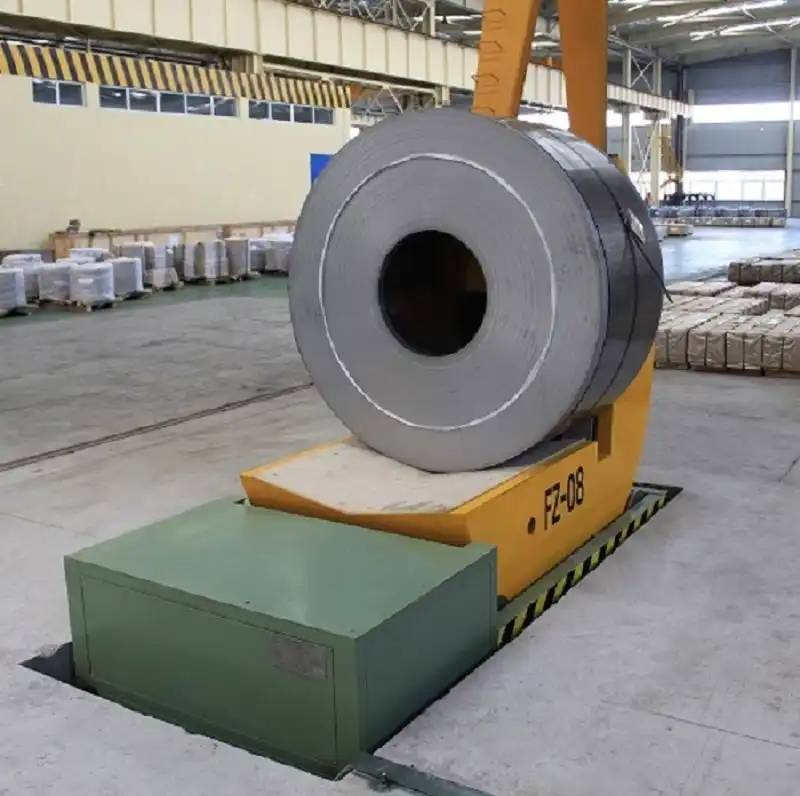
Selecting the Right Coil Upender with Weighing
Choosing the appropriate machine requires careful consideration of several factors:
- Capacity: Must safely exceed the maximum weight of the coils handled.
- Coil Dimensions: Platforms must accommodate the maximum outside diameter (OD), inside diameter (ID), and width of the coils.
- Speed and Duty Cycle: How quickly does the rotation need to occur, and how frequently will the machine be used?
- Power Source: Hydraulic or mechanical, based on application needs and plant infrastructure.
- Weighing System Requirements: Required accuracy, data output format (display, print, network integration).
- Loading Method: How will coils be loaded/unloaded (overhead crane, forklift, coil car)? This influences platform design (e.g., V-cradle, flat platform, conveyor integration).
- Safety Features: Specific requirements like light curtains, fencing, specific control types.
- Environment: Is the operating environment harsh (dust, temperature extremes)?
Manufacturers often offer customization options, including specialized cradles, non-marking surfaces, 180-degree powered rotation bases, specific control integrations, and tailored weighing system outputs.
Conclusion: Investing in Smarter, Safer Coil Handling
In today's competitive manufacturing landscape, optimizing every aspect of production is key. Handling heavy steel coils remains a necessary but potentially hazardous and time-consuming part of many processes. The steel coil upender with integrated weighing represents a significant leap forward, addressing core challenges head-on. By combining 90-degree rotation and accurate weighing into a single, efficient operation, these machines enhance workplace safety, reduce material damage, increase throughput, improve inventory accuracy, and ultimately contribute to a more productive and profitable bottom line. For any fabricator or processor dealing with steel coils, investigating this integrated material handling solution is not just an option—it's a strategic imperative for smarter, safer operations.

